Did you know that early detection of uterine cancer can lead to a 95% survival rate?
In the world of healthcare, early detection of Uterine Cancer is your superpower, and it’s like the first cup of coffee in the morning – here’s how you can find out if Uterine Cancer is curable if caught early.
Read about the pivotal role of early detection in the battle against uterine cancer and how it can change the course of your health.
You can Navigate Your Cancer Journey with Medicoexpert’s Tumor Board Expert Guidance.
To know more… let’s dive in…
When it comes to uterine cancer, early detection is a game-changer. This blog dives into its curability when caught early, the significance of timely detection, and expert insights for your journey.
Let’s Now Understand Uterine Cancer in more detail…
What is Uterine Cancer?
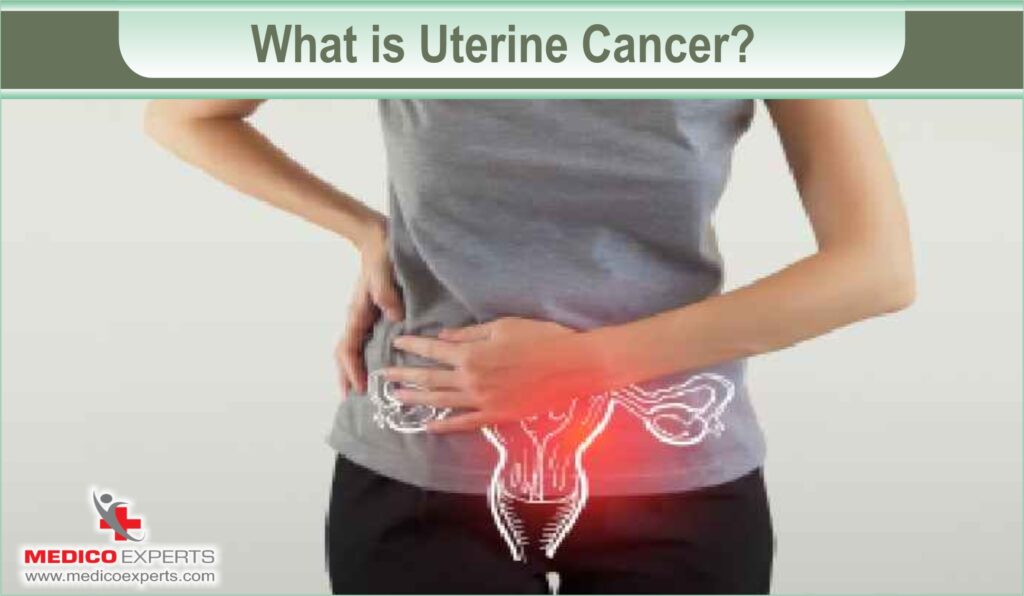
Uterine cancer primarily begins in the inner lining of the uterus, known as the endometrium. This cancer typically develops in postmenopausal women but can affect women of any age.
The most common type of uterine cancer is endometrioid adenocarcinoma, (a cancer type that originates in the uterine lining) which accounts for the majority of cases.
What Are The Causes and Risk Factors Associated With Uterine Cancer?
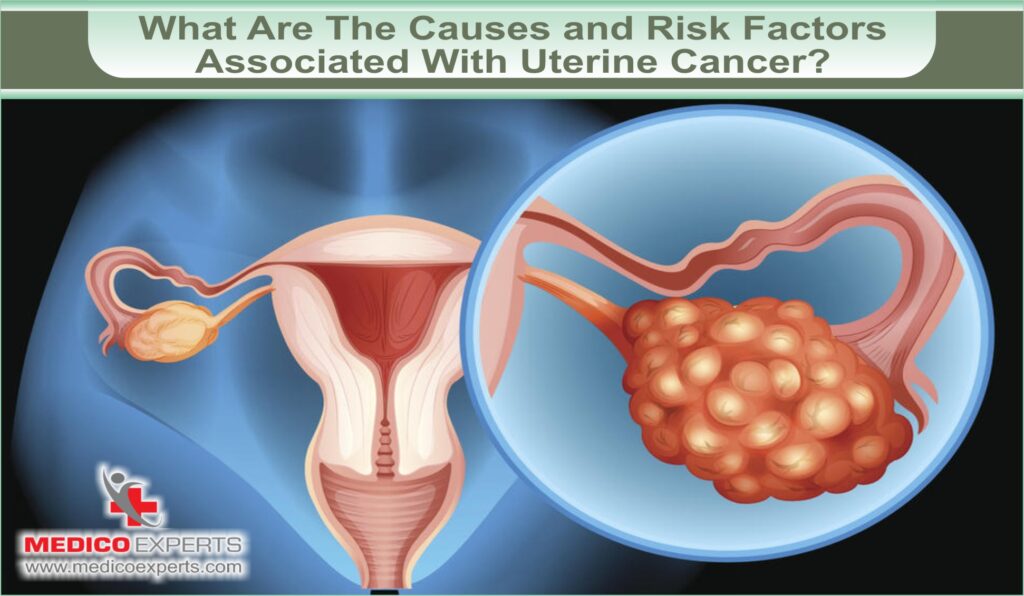
While the exact cause of uterine cancer remains unclear, certain risk factors can increase a woman’s likelihood of developing the disease:
Hormonal Imbalance:
An excess of estrogen without the counterbalancing hormone, progesterone, can raise the risk.
Obesity:
Being overweight can increase estrogen production, which may promote uterine cancer.
Age:
The risk of uterine cancer rises as women age, with most cases diagnosed in women over 50.
Family History:
A family history of uterine or colorectal cancer can increase the risk.
Certain Medical Conditions:
Polycystic ovary syndrome (PCOS) and diabetes are associated with higher uterine cancer risk.
Tamoxifen Use:
This medication, often prescribed for breast cancer, can slightly increase uterine cancer risk.
Why Early Detection Of Uterine Cancer Matters?
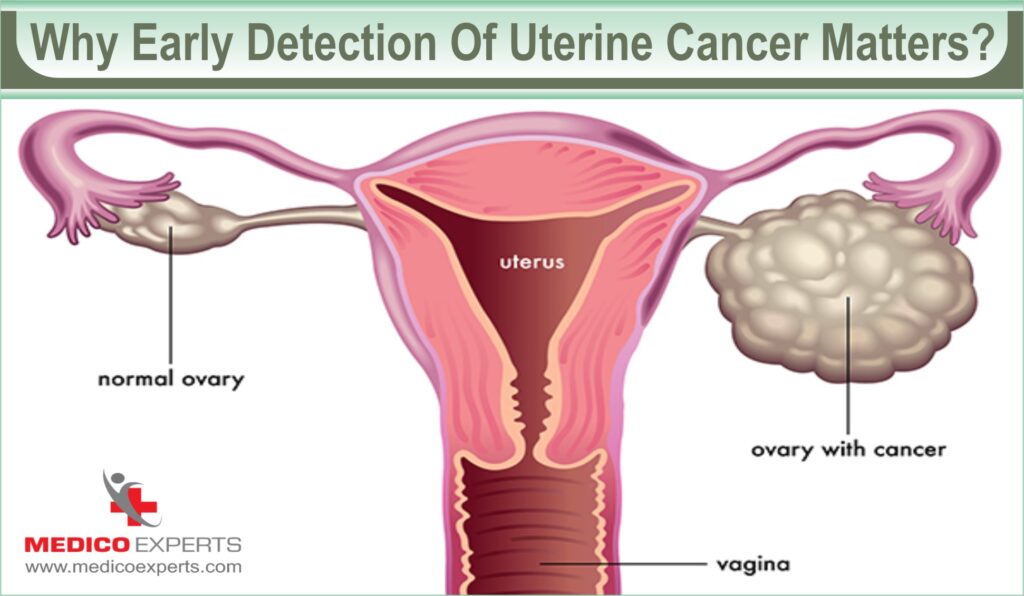
Early detection is critical when it comes to uterine cancer. Like other cancer types, the earlier it’s detected, the more curable it becomes.
Here are several reasons why early detection is crucial:
Improved Treatment Options:
When uterine cancer is caught in its early stages, more treatment options are available. Surgery, radiation therapy, and hormone therapy can be highly effective.
Higher Survival Rates:
The five-year survival rate for localized uterine cancer is around 81%, whereas the rate drops to 68% for cancer that has spread to nearby tissues and lymph nodes.
Reduced Complications:
Advanced uterine cancer can lead to severe complications, such as bladder and bowel problems. Early detection helps minimize these risks.
Preservation of Fertility:
In some cases, early-stage uterine cancer treatment may allow for the preservation of fertility.
What Are The Symptoms Of Uterine Cancer?
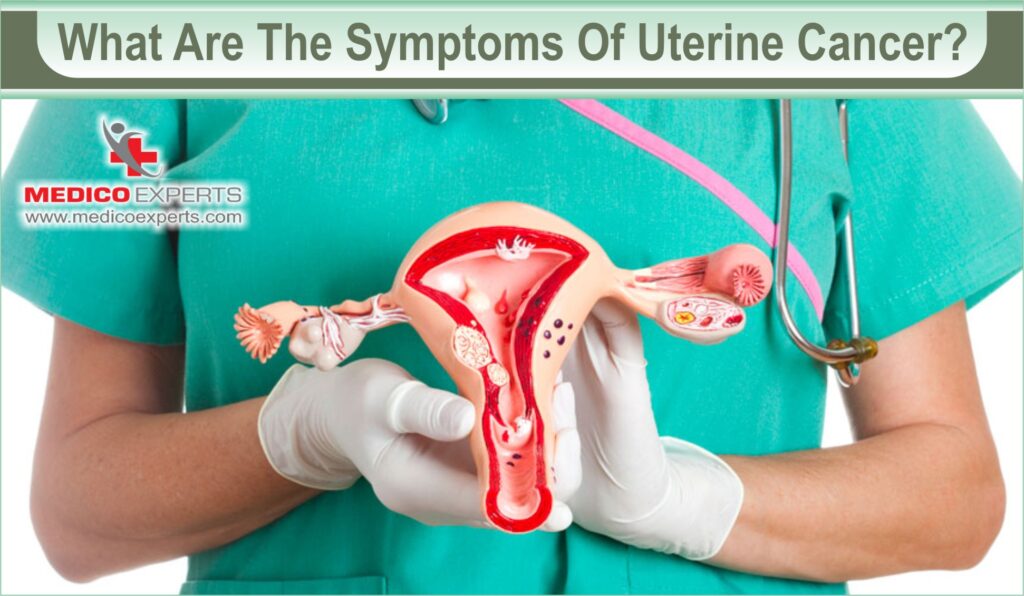
The symptoms of uterine cancer, also known as endometrial cancer, can vary from person to person, and some individuals may experience no symptoms at all, especially in the early stages.
However, it’s essential to be aware of potential warning signs, as early detection is key to successful treatment.
Common symptoms of uterine cancer include
- Abnormal Vaginal Bleeding:
This is the most common and significant symptom of uterine cancer. It may include:
- Postmenopausal Bleeding:
If you’ve experienced menopause (12 consecutive months without a menstrual period) and you notice any vaginal bleeding, a healthcare professional should promptly evaluate it as abnormal.
- Heavy or Prolonged Menstrual Bleeding:
Changes in your menstrual cycle, such as extremely heavy or prolonged periods, are a possible sign, particularly if this is a new and unusual occurrence for you.
- Bleeding Between Periods:
Spotting or bleeding that occurs between menstrual cycles should be investigated.
2. Pelvic Pain:
The symptoms of uterine cancer include pelvic discomfort or persistent pain. This pain may vary in intensity and may not be limited to the pelvis but can radiate to the lower back.
3. Painful Urination:
Some individuals with uterine cancer may experience pain or discomfort during urination, although this symptom is less common.
4. Unexplained Weight Loss:
Sudden and unintended weight loss, especially if accompanied by other uterine cancer symptoms, should not be ignored.
It’s important to remember that these symptoms can be caused by various other conditions, and having one or more of these symptoms does not necessarily mean you have uterine cancer.
However, if you experience any of these symptoms, especially if they are persistent or unusual for you, it is crucial to consult with a healthcare professional for a proper evaluation and diagnosis.
Regular gynecological check-ups and open communication with your healthcare provider are essential for early detection and prompt intervention if necessary.
But, is Uterine Cancer Curable if Caught Early? to get an answer, continue reading….
The Stages of Uterine Cancer
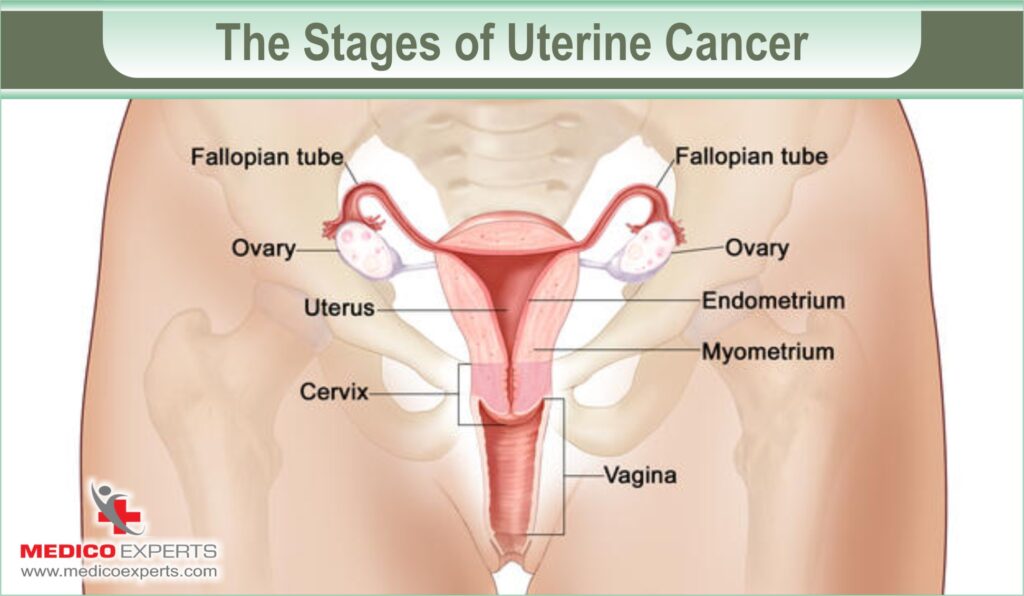
To determine if uterine cancer is curable when caught early, it’s essential to understand cancer staging. Staging refers to the extent of cancer’s spread and guides treatment decisions.
Uterine cancer has several stages:
- Stage 0:
Cancer is only in the lining of the uterus.
- Stage I:
Uterine cancer is contained within the uterus body.
- Stage II:
Cancer has spread to the cervix.
- Stage III:
Cancer has extended beyond the uterus but is still within the pelvic area.
- Stage IV:
There are lymph nodes or distant organs affected by cancer.
When uterine cancer is detected in stages 0 or I, it is often considered curable with appropriate treatment. The majority of cases are diagnosed in these early stages, increasing the chances of a positive outcome.
Treatment for Early-Stage Uterine Cancer
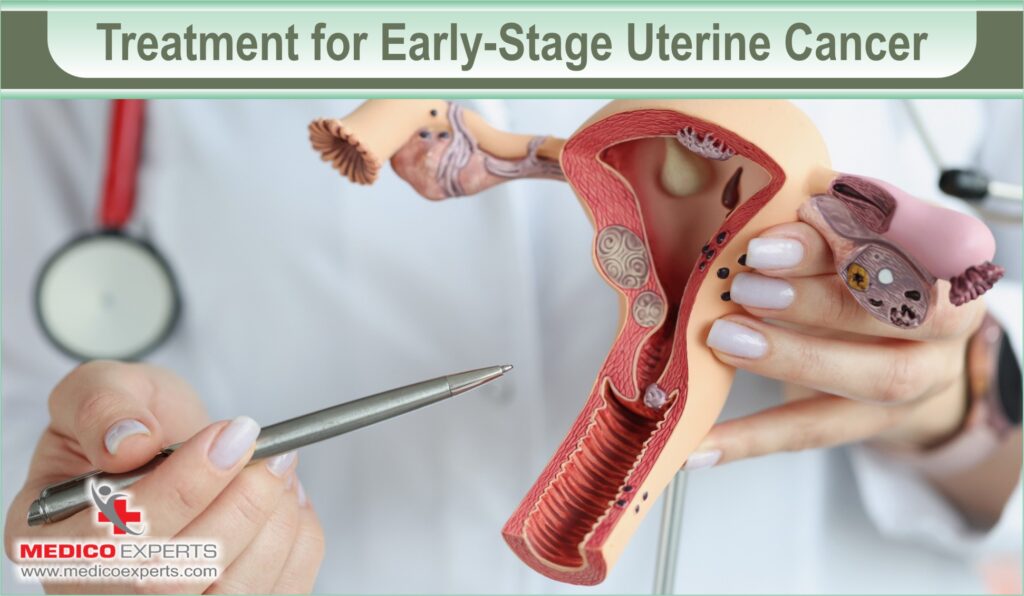
Uterine cancer treatment varies based on factors such as the stage of the disease, the type of cancer, and the patient’s overall health.
In addition to the surgical and radiation therapies mentioned earlier, there are several other treatment options available, including chemotherapy, hormone therapy, targeted therapy, immunotherapy, and surgery in some cases.
Here’s a brief overview of these treatment options:
1. Chemotherapy
Chemotherapy is a systemic treatment that involves using drugs to destroy cancer cells or stop their growth. It can be administered intravenously or as oral medication. While chemotherapy is not always the first-line treatment for uterine cancer, it may be recommended in the following situations:
- Advanced Stage:
Chemotherapy is often used to treat uterine cancer that has spread beyond the uterus, as it can target cancer cells throughout the body.
- Recurrence:
In cases of cancer recurrence, chemotherapy may be used to slow the growth of cancer or shrink tumors.
- Neoadjuvant Therapy:
Sometimes, chemotherapy is given before surgery to reduce the size of the tumor, making it easier to remove.
Oncologists will determine the choice of chemotherapy drugs and treatment regimen based on the specific type and stage of uterine cancer and the individual patient.
2. Hormone Therapy
Hormone therapy is mainly used for treating a specific type of uterine cancer known as endometrial stromal sarcoma, which is influenced by hormonal changes. Hormone therapy aims to block the effects of hormones, typically estrogen, on the cancer cells. This can be achieved through:
- Medications:
Hormone therapy often involves taking medications like progestins or aromatase inhibitors to reduce estrogen’s impact on the cancer cells.
Hormone therapy is not suitable for all types of uterine cancer and is usually considered when other treatments have been ineffective or for women who cannot undergo surgery or radiation.
3. Targeted Therapy
Targeted therapy is a treatment that specifically targets the molecules involved in cancer growth. This treatment is more precise than chemotherapy, as it focuses on the abnormalities in cancer cells, sparing healthy cells. In uterine cancer, targeted therapy may involve drugs that target factors such as vascular endothelial growth factor (VEGF) or epidermal growth factor receptor (EGFR).
Targeted therapy is often used in combination with other treatments and may be recommended for advanced or recurrent uterine cancer.
4. Immunotherapy
Immunotherapy is a rapidly evolving field in cancer treatment. It involves using drugs that help the body’s immune system recognize and attack cancer cells.
While immunotherapy has shown great promise in various cancers, its role in treating uterine cancer is still under investigation, and it is not yet a standard treatment option for this disease. However, ongoing research and clinical trials may reveal its potential benefits for uterine cancer patients in the future.
5. Radiation Therapy
- External Beam Radiation:
High-energy rays are directed at the cancer site to destroy cancer cells.
- Brachytherapy:
A radioactive source is placed inside the uterus to treat the cancer.
6. Emotional, Physical, Financial, and Social Effects of Cancer
A cancer diagnosis, including uterine cancer, has a profound impact on a person’s life. Apart from the physical effects related to the disease and its treatment, it can lead to a range of emotional, social, and financial challenges.
- Emotional Effects:
Coping with cancer can bring about a wide range of emotions, including fear, anxiety, depression, and stress.
Many patients find it helpful to seek support from therapists, support groups, or mental health professionals.
- Social Effects:
A cancer diagnosis can affect relationships and social interactions. Some patients may experience changes in their roles within the family, at work, or in their social circles.
During this time, it is crucial to communicate openly with loved ones and to receive support from them.
- Financial Effects:
The cost of cancer treatment, medications, and other related expenses can be substantial.
It’s essential to explore financial assistance options, insurance coverage, and support from organizations and charities that help cancer patients with the financial burden.
Cancer treatment and recovery are not just about the physical aspect but also about the holistic well-being of the patient.
7. Metastatic Uterine Cancer
Metastatic uterine cancer is an advanced stage of the disease where cancer has spread to distant parts of the body. While metastatic cancer is more challenging to treat, there are still treatment options available to manage the disease and provide palliative care to improve the patient’s quality of life.
These treatment options may include a combination of chemotherapy, targeted therapy, and supportive care to relieve symptoms and slow the progression of the cancer.
In cases of metastatic uterine cancer, patients must work closely with their healthcare team to determine the most appropriate treatment plan, considering the individual’s overall health and specific cancer characteristics.
8. Surgery
- Hysterectomy:
The removal of the uterus is the most common surgical procedure for uterine cancer. There is also the possibility of removing the ovaries and fallopian tubes in some cases.
- Lymph Node Dissection:
Lymph nodes in the pelvis may be removed and examined to determine if the cancer has spread.
The treatment of uterine cancer involves a range of options, and the choice of treatment depends on factors such as the cancer stage, type, and the patient’s health.
Getting an early heads-up definitely boosts your odds of beating it, but advanced or recurrent uterine cancer can also be managed with a combination of therapies.
Moreover, addressing the physical, emotional, social, and financial aspects of cancer is vital for holistic patient care. Always consult with healthcare professionals to determine the most suitable treatment plan for your specific situation.
Conclusion
Dealing with a cancer diagnosis can be overwhelming. The complex decisions surrounding treatment options, potential side effects, and navigating the healthcare system can leave patients and their families feeling lost.
This is where Medicoexpert’s Tumor Board steps in to provide invaluable support and guidance.
Medicoexpert’s Tumor Board: Your Expert Guide in the Battle Against Cancer
Medicoexpert’s Tumor Board is a multidisciplinary team of medical experts with specialized knowledge in various aspects of cancer care.
Our team is dedicated to guiding patients through their cancer journey, helping them make informed decisions, and ensuring that they receive the best possible care.
The Tumor Board offers second opinions on your diagnosis and treatment plan. This can be particularly valuable if you’re uncertain about the initial recommendations or if you want to explore alternative options.
The Tumor Board acts as a bridge between you and your healthcare providers, ensuring clear and effective communication. They help coordinate appointments, tests, and consultations to streamline your care.
Connect with us today!
FAQ :
Q1. How much does the treatment for uterine cancer cost?
A: The cost of uterine cancer treatment can vary widely based on factors such as the stage of cancer, the type of treatment required, the healthcare facility, and your location. On average, surgical interventions can span from INR 2,00,000 to INR 5,00,000 (approximately $2,700 to $6,800). Meanwhile, the cost of radiation therapy typically falls within the range of INR 1,50,000 to INR 4,50,000 (approximately $2,000 to $6,100) for the complete course of treatment.
Q2: Is uterine cancer only a concern for older women?
A: While the risk of uterine cancer increases with age, it can affect women of all age groups. Younger women can also develop uterine cancer, but the majority of cases are diagnosed in women over 50. It’s essential for women of all ages to be aware of the risk factors and symptoms and seek medical attention if any concerns arise.
Q3. Can uterine cancer come back after treatment?
A. Yes, uterine cancer can recur, even after successful treatment. Regular follow-up appointments with your healthcare team are essential to monitor for any signs of recurrence and take appropriate action if needed.
Q4. Are there any lifestyle changes that can reduce uterine cancer risk?
A. Maintaining a healthy weight, staying physically active, and managing conditions like diabetes can help reduce the risk of uterine cancer. Additionally, early detection through regular check-ups and screenings is vital.
Q5. What are the side effects of uterine cancer treatment?
A. The side effects of uterine cancer treatment can vary depending on the type of treatment received. Common side effects may include fatigue, pain, changes in bowel or bladder function, and emotional distress. It’s essential to discuss potential side effects with your healthcare team and seek support when needed.
The Medicoexpert’s Tumor Board Team is here to provide the support and guidance you need, ensuring that you receive the best care possible.



